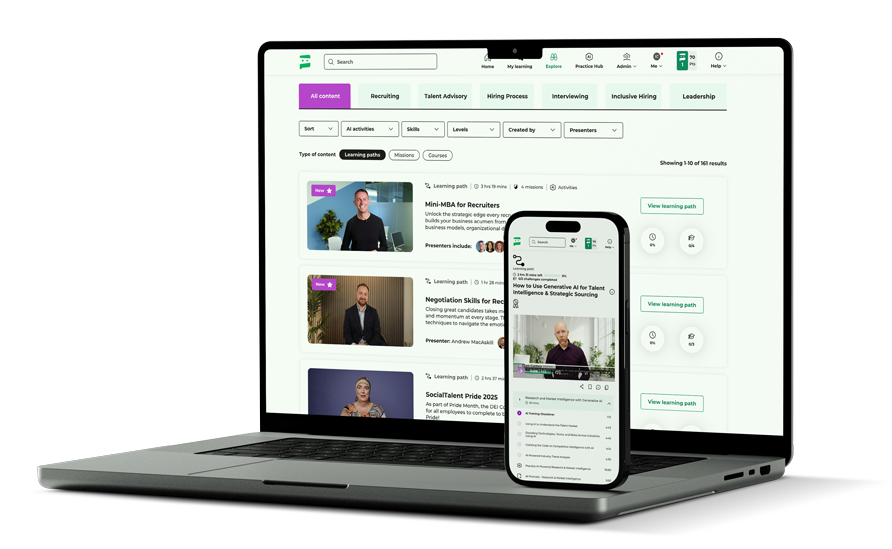
By Johnny Campbell
A few Fridays ago, I found myself chatting away with ChatGPT (this is not unusual, stay with me!) on the drive to a meeting. Forty minutes. Just me and my AI copilot talking through a sticky strategy problem. By the time I pulled into the car park, I’d mapped out my options, weighed the risks, and had a half-decent summary ready to get everyone on the same page. The conversation wasn’t just useful – it was energising.
And slightly surreal.
Because this wasn’t a search. It wasn’t automation. It was collaboration. That’s the real shift happening right now. AI isn’t just helping us do tasks faster, it’s helping us think better. Problem-solve. Strategise. Reframe. It’s starting to feel less like a tool and more like a teammate.
But if that’s true – if we’re moving into a world where AI isn’t just something we use but something we work with – then the question changes. It’s no longer “What can AI do for me?” It’s “How do I get the best out of AI?”
That’s exactly what I wanted to explore with Glen Cathey, SVP of Talent Advisory at Randstad Enterprise. Glen joined me on the latest episode of Hiring Excellence podcast to unpack how AI is reshaping the recruiter’s role and why mastering it has more to do with mindset than prompts.
Here’s what stood out.
AI Is Not a Tool. It’s a Teammate.
Most of us still treat AI like a better Google. We feed it a prompt, cross our fingers, hope it spits out something decent, and move on with our tasks. But Glen’s insight flips that completely:
“AI skills are really the same skills as managing people.”
That one hit me.
The most effective users of AI, Glen says, don’t just focus on prompts. They think like managers. They identify a problem, break it into smaller tasks, delegate those tasks clearly, review the output, and give feedback. Sound familiar?
We’ve trained leaders for years to manage people this way. Now, we need to train everyone – recruiters, sourcers, hiring managers – to manage a resource that’s faster, smarter, and never sleeps. And here’s the kicker: most people in our industry aren’t trained to manage anyone. We’re all suddenly expected to direct a powerful new workforce (generative AI, automated agents), but nobody’s really given us the playbook.
So here’s the mindset shift: AI isn’t your assistant. It’s your newest team member. And if you want to get the best out of it, you’d better start managing it properly.
Learn more: Moving Beyond the Hype of AI and Recruiting
Not Just for Admin: Why You’re Aiming Too Low
Let’s talk about how people use AI today.
Most recruiters start by outsourcing the boring, admin stuff – writing messages, summarising CVs, rephrasing outreach. That’s totally fine. But it’s like hiring a world-class strategist and only asking them to schedule your meetings.
“If you had a genius-level colleague with access to the world’s knowledge,” Glen asked, “what would you ask them to do?”
It’s a simple question, but most of us don’t think that way yet.
One of Glen’s best examples was experimenting with ChatGPT to write persuasive candidate messages. He’s known for being one of the best in the business at this – but even he admitted that with the right setup, AI could match him. Not just once, but consistently.
That’s not scary. That’s liberating.
If you’ve ever struggled to train a team to write better messages, or spent hours coaching someone on sourcing techniques, AI can now do some of that heavy lifting. Not to replace your team, but to raise the floor. To make everyone better.
But only if you ask more of it.
It’s Not Just What You Say, It’s Who You Ask AI to Be
Here’s a simple but powerful tactic Glen recommends, and it’s one I now use all the time. When you’re asking AI to help you with something, don’t just give it a task. Give it a role.
Want to write a business case for your CFO? Ask AI to be your CFO. Feed it some insight about how your CFO thinks. What they care about. What numbers they usually push back on. Let AI role-play the conversation.
Want to test your own assumptions? Ask it to challenge you like a sceptical stakeholder. Or review your plan like a passive candidate who doesn’t trust recruiters. Or rewrite your job ad from the perspective of someone with ADHD.
The minute you start treating AI like a person, with context, personality, and preferences, it starts giving you much better answers. It thinks more deeply. It anticipates objections. It adapts.
That’s what we mean when we say “manage the machine.”
A Challenge: What If AI Manages Us?
At one point in our conversation, Glen asked a question that made me pause:
“What happens when you’re managing a resource that’s smarter and more capable than you?”
It feels like science fiction, but there is an argument to be made that that’s exactly where we’re at with AI. It already has more access to data, best practices, and pattern recognition than any one of us could ever hold in our heads. And in certain domains – persuasion, coding, scenario analysis – it’s already outperforming us.
Glen suggests a not-so-distant future where AI doesn’t just support human managers… it becomes one.
There are startups today experimenting with AI agents that give feedback to team members, coach them through tasks, and allocate resources based on workload. Again, it sounds dystopian until you remember most people would rather get honest, actionable feedback from a nonjudgmental source than from a manager who’s stretched too thin or one that simply shouldn’t be in a managerial role.
It’s a wild thought right now, I admit. But it’s worth sitting with.
For the Newbies and the Power Users: Practical Tips from Glen
Before we wrapped up the episode, I asked Glen for his best tips for two types of AI users: the newbie (just getting started) and the power user (already using AI every day).
Here’s what he shared:
For AI Newbies:
- Treat AI like a person. Give it context about your job, goals, and challenges.
- Ask it: “What can you help me with?” It’ll surprise you.
- Have a conversation, not just a prompt. Use follow-ups like “tell me more” or “what’s a better way?”
For Advanced Users:
- Use personas. Ask AI to take on roles – CFO, passive candidate, hiring manager, coach, etc.
- Use it to test your thinking. Draft something, then ask AI to critique it.
- Ask for feedback. Glen regularly asks AI: “Where are my blind spots?” (Brave man!)
And here’s one from me: use your voice. Talk to AI out loud. On a walk, in your car, through your phone. When I started doing this, I stopped treating AI like a search engine and started treating it like a thinking partner. It’s been a game-changer.
Learn more: Check out our Complete AI Recruiting Playbook
AI Won’t Save You. But It Might Upgrade You
There’s a phrase I’ve heard a lot lately: “AI won’t take your job, but someone who knows how to use it will.” Glen doesn’t quite buy that. Some jobs will go. But the real opportunity isn’t just survival – it’s evolution.
We’ve entered an era where the best recruiters, the best sourcers, the best leaders… will be the ones who treat AI not as a shortcut, but as a strategic partner. Essentially, the ones who manage the machine, and in turn, let the machine make them better are going to be lightyears ahead.
Want more? Listen to the full podcast with Glen Cathey:



